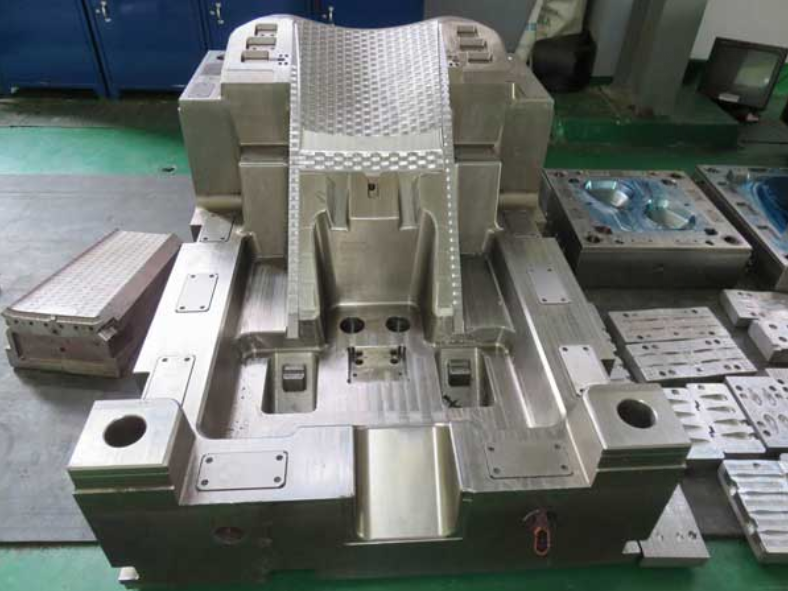Creating High-Quality Plastic Industrial Crate Moulds
Plastic industrial crates play a crucial role in various industries, including logistics, warehousing, and transportation. These crates are designed to safely store and transport goods, making them an essential tool for businesses worldwide. Behind the production of these crates lies the process of creating high-quality plastic industrial crate moulds. In this article, we will explore the importance of these moulds and the steps involved in their creation.
The quality of plastic industrial crate moulds is vital as it directly affects the quality of the final product. A well-designed and accurately manufactured mould ensures that the crates produced are sturdy, durable, and capable of withstanding the demands of industrial use. High-quality moulds also result in crates that can safely hold heavy loads without deformation or breakage, providing businesses with reliable storage and transportation solutions.
The process of creating high-quality plastic industrial crate moulds begins with careful planning and design. This stage involves collaborating with clients to determine their specific requirements and expectations. Factors such as crate dimensions, load capacity, and desired features are taken into consideration. Experienced mould designers utilize advanced software to create detailed 3D models, allowing clients to visualize the final product before manufacturing begins.
Once the design phase is complete, the next step is the selection of suitable materials for the mould. Common options include steel and aluminum, both known for their durability and longevity. The chosen material is then processed to create the mould base, which forms the foundation of the entire mould structure. Precision is crucial during this stage to ensure accurate and consistent crate production.
The mould base is then fitted with various components such as cavities, cores, and ejection systems. These components are responsible for shaping the plastic material into the desired crate form. Each component is carefully machined and assembled, ensuring a tight fit and precise alignment. The expertise of skilled engineers and technicians is essential during this stage to guarantee the quality and functionality of the mould.
Once the mould components are complete, they undergo rigorous testing to ensure their effectiveness. This testing involves injecting molten plastic into the mould and examining the resulting crate for any defects or imperfections. If any issues are identified, adjustments are made to the mould to rectify them. This iterative process continues until the mould produces flawless crates consistently.

After successful testing, the mould is ready for production. Advanced injection molding machines are used to inject molten plastic into the mould cavities under high pressure. This process ensures that the plastic material fills every detail of the mould, resulting in accurate crate dimensions and features. The injected plastic then cools and solidifies within the mould, after which the crates are ejected.
Creating high-quality plastic industrial crate moulds requires expertise, precision, and attention to detail. The process involves careful planning, design, material selection, component assembly, testing, and production. By following these steps, manufacturers can ensure that the moulds produce durable and reliable crates that meet the specific needs of their clients.
In conclusion, the production of high-quality plastic industrial crates relies on the creation of equally high-quality moulds. These moulds determine the strength, durability, and functionality of the final product. By investing in well-designed and accurately manufactured moulds, businesses can provide their customers with reliable storage and transportation solutions for their goods.
Vorig:Exclusive English Offer: Injection Chair Mold
Volgende: Creating High-Quality Plastic Fruit Crate Moulds for Efficient Packaging
-
Grote plastic mallen maken voor efficiënte productie
2023-4-14
Creating large plastic molds for efficient manufacturing is an essential part of producing high-quality plastic products...
Bekijk details -
Manufacturing Medical Molding Parts: Ensuring Precision and Quality
2023-10-5
In the medical field, precision and quality are paramount when it comes to manufacturing medical molding parts. These pa...
Bekijk details -
2023-4-19
Industriële vormdelen zijn essentiële componenten die worden gebruikt in het fabricageproces van verschillende industriële producten....
Bekijk details -
Industrial Plastic Molds: Precision Tools for Manufacturing
2024-5-31
In the vast world of manufacturing, industrial plastic molds have become an indispensable and important tool with their ...
Bekijk details -
Injection Molding Parts – High-Quality Components for Your Manufacturing Needs
2023-4-21
Injection molding is a manufacturing process that is used to produce a wide range of plastic parts. The process involves...
Bekijk details -
Injection Mold Manufacturing: Streamlining Your Production Process
2023-5-12
Injection mold manufacturing is a complex process that requires a high degree of precision, skill, and attention to deta...
Bekijk details







